 W
W4-Koma Nano Ace (4コマnanoエース) was a Japanese yonkoma shōnen/seinen manga magazine published by Kadokawa Shoten. The magazine existed between 2011 and 2013.
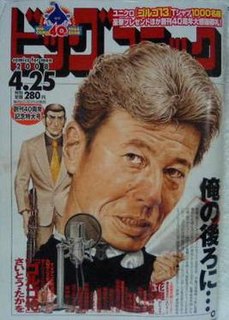 W
WBig Comic is a semimonthly seinen manga magazine published since 28 February 1968 by Shogakukan in Japan. It was originally launched as a monthly magazine, but switched to twice monthly on the 10th and 25th beginning in April 1968. It is paired with sister magazine Big Comic Original, going on sale in the weeks Big Comic Original does not. Circulation in 2008 was reported at slightly over a half-million copies. but by mid-2015 had declined to 315,000, as part of an industry-wide trend in manga magazine sales.
 W
WBig Comic Original is a Japanese seinen manga magazine published by Shogakukan, aimed at an older adult and mostly male audience. It is a sister magazine to Big Comic, the biggest difference being that it goes on sale twice a month in the weeks Big Comic doesn't. Cover artwork usually features a dog or cat, and a haiku. The dozen or so manga serials running at any given time feature a wide variety of material, from historical dramas and suspense to sports and romance, with relatively little science fiction or fantasy.
 W
WBig Comic Spirits is a weekly Japanese seinen manga magazine published by Shogakukan. The first issue was published on October 14, 1980. Food, sports, romance and business are recurring themes in the magazine, and the stories often question conventional values. The magazine is published every Monday. Circulation in 2008 averaged over 300,000 copies, but by 2015 had dropped to 168,250. In 2009 Shogakukan launched a new sister magazine, Monthly Big Comic Spirits.
 W
WBig Comic Superior is a semimonthly seinen manga magazine published since July 1, 1987 by Shogakukan in Japan. Its target audience is somewhere between the audience for Big Comic Original and Big Comic Spirits. The magazine has published works by a number of well-known manga artists, including Ryoichi Ikegami, Mochiru Hoshisato, Yū Koyama, Yūji Aoki, Fumi Saimon, Norifusa Mita, George Akiyama, and Buronson.
 W
WBusiness Jump , was a Japanese seinen manga anthology published by Shueisha under the Jump line of magazines. The manga of Business Jump were published under the "Young Jump Comics" line. This magazine's mascot was an anthropomorphic, Western-style mouse illustrated by Susumu Matsushita.
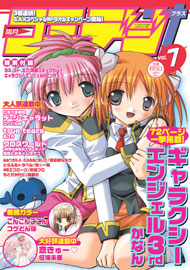 W
WBimonthly Comi Digi was a Japanese seinen manga magazine edited by Broccoli, published by Flex Comix, and sold through Soft Bank Creative. The magazine is sold bimonthly on even-numbered months on the twenty-first. The magazine was originally published in April 2003 under the title Quarterly Di Gi Charat , after the series Di Gi Charat published by Broccoli Books. The magazine was suspended in July 2004, but restarted publication in October 2004 under the new title Comic Di Gi Charat and was sold bimonthly as a special edition version of Comic Rush. The title was changed again in October 2005 to simply Comi Digi , and lasted for two issues until the title was changed a final time to the current Comi Digi + on April 21, 2006. The final issue was released 21 August 2008.
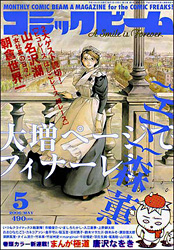 W
WComic Beam (コミックビーム) is a Japanese seinen manga magazine published by Enterbrain on a monthly basis since November 1995. In 2006, it had a circulation of 25,000. Popular manga serialized in Comic Beam include Kaoru Mori's Emma about the love story between a maid and an aristocratic man in Victorian England. Emma was adapted into an anime series and translated into many languages. Koi no Mon revolves around a group of otaku, their lives and romantic relationships. The comedy by Hanyu-new was made into a film in 2004. Comic Beam is considered an "alternative" manga magazine in the Japanese publishing industry, where its 25,000 circulation is less than 1% of other more popular manga magazines like Weekly Shōnen Jump. Its small but loyal readership is regarded as consisting largely of hardcore comic enthusiast and art students.
 W
WComic Cune is a Japanese seinen manga magazine which mainly serializes 4-koma manga published by Media Factory. The magazine originally began to be published as a supplement 4-koma magazine in Comic Alive in October 2014 but in June 2015, the publisher announced that Comic Cune would be its own magazine instead of just a supplement for Comic Alive, with the magazine debuting on August 27, 2015 with the titles it had before.
 W
WComic High! was a Japanese seinen manga magazine published on a monthly basis by Futabasha. It was launched as a special issue of Weekly Manga Action but became its own independent monthly anthology. The magazine was first published on 2 March 2004 as the industry's first shōjo manga magazine for males; the official website describes the magazine as "Girlish comics for boys and girls." The magazine is aimed at males between 18 and 35 years old. The final issue of the magazine was published in May 2015.
 W
WComic Valkyrie is a Japanese science fiction and fantasy seinen manga magazine published by Kill Time Communication. Its target readership is males between their teens and thirties. The first volume was released on July 25, 2006, and ran in bimonthly volumes until it switched to monthly publication, starting with Volume 30 on May 27, 2011. However, it switched back to bimonthly serialization following the release of Volume 34 on September 27, 2011. The final issue was published on September 27, 2012, before it switched to a free, online-only publication on its website with full volumes and chapters available on Nico Nico Douga's online book service, Nico Nico Seiga.
 W
WComic Yuri Hime S was a quarterly yuri manga magazine published by Ichijinsha. The first issue was published on June 18, 2007. It was the sister magazine of Comic Yuri Hime. The contributors were mostly shōnen and seinen manga authors. The magazine is aimed at male readers, and included moe elements. In 2010 it was merged with Comic Yuri Hime.
 W
WDengeki G's Comic was a Japanese seinen manga magazine published by ASCII Media Works. The magazine was first published digitally on August 9, 2012 with volume 0, and started monthly publication with the following issue released on October 15, 2012. From April 2013 to April 2014, the magazine was released biweekly. Dengeki G's Comic began to be published monthly in print with the June 2014 issue sold on April 30, 2014. The magazine ended its print version on March 30, 2019 and the manga serialized in it continued as a web publication on Kadokawa's ComicWalker service and Dwango's Niconico Seiga website.
 W
WDengeki Maoh is a Japanese seinen magazine published by ASCII Media Works. It first went on sale on October 27, 2005, and is sold every month on the twenty-seventh. The magazine features information on video games, manga, and light novels. A special edition version of the magazine called Dengeki Black Maoh was published quarterly from September 2007 to June 2010.
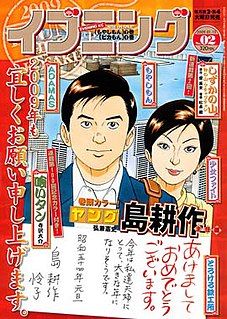 W
WEvening is a bi-weekly Japanese seinen manga magazine published by Kodansha, aimed at adult men. It is printed in black and white on newsprint and saddle-stapled in B5 format, and retails for 380 yen. Circulation was reported by the Japan Magazine Publishers Association at 115,617 copies in 2015.
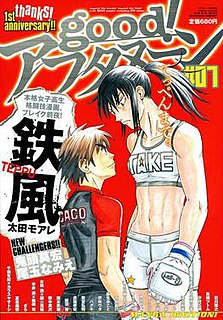 W
WGood! Afternoon is a Japanese seinen manga magazine anthology published by Kodansha. Initially published bimonthly, it switched to a monthly publication schedule starting with the 25th issue in late 2012. Each issue typically has around twenty-five stories by various artists and runs about 800 pages. It is a sister magazine to Kodansha's successful monthly manga anthology Afternoon, and was first launched on November 7, 2008. Each issue sells for 680 yen. It had a circulation of 27,000 from 1 October 2018 to 30 September 2019.
 W
WGrand Jump (グランドジャンプ) is a Japanese semi-monthly seinen manga magazine published by Shueisha under their Jump line of magazines. Launched in November 2011 as a merging of Business Jump and Super Jump, it carried over nine series from the former and three from the latter in addition to beginning new titles.
 W
WHarta , formerly known as Fellows!, is a Japanese seinen manga magazine published by Enterbrain. Created in 2008, the magazine was originally called Fellows! and was published with a frequency of publication of two months. In December 2012, Enterbrain announced a revamp on the magazine beginning with its February issue in 2013 with the publication changing its name of Fellows! to Harta and also changing its frequency from bimonthly to ten issues per year from February to August and then October to December. The name is inspired by Indonesian word "Harta", which means "treasure."
 W
WMagi-Cu was a Japanese manga magazine published by Enterbrain and was sold monthly on the twenty-fifth. The name comes from the phrase Magical Cute. The magazine was first published on April 27, 2001, under the title Magi-Cu Premium. It kept that title for three years until 2004, when it was changed to simply Magi-Cu. In June 2007, Magi-Cu published its last issue at volume forty.
 W
WManga Action (漫画アクション) is a Japanese seinen manga magazine published by Futabasha. It is currently published twice a month, on the first and third Thursday The magazine was originally formed as Weekly Manga Action (WEEKLY漫画アクション) and began publishing weekly from July 7, 1967. It is considered the first true seinen magazine. In 2003 it changed to its current publishing format and dropped the Weekly part of its name to reflect its new schedule.
 W
WManga Home is a Japanese monthly seinen manga magazine published by Hōbunsha since December 1987. The magazine is released monthly on the 2nd. Manga Home is printed as B5 size. The magazine is known for having inspirational and family-themed messages on the edges of the pages, and many of the manga focus on husbands and wives, families, and related topics.
 W
WManga Sunday , also known by the nickname Mansun (漫サン), is a defunct Japanese weekly seinen manga magazine published by Jitsugyo no Nihon Sha. It started to be published under the name Weekly Manga Sunday in 1959. On June 5, 2012, it start to be published twice in a month and the "Weekly" was dropped from its name. On February 19, 2013, the last issue was published and the magazine was declared defunct by Jitsugyo no Nihon Sha.
 W
WManga Time is a Japanese monthly yonkoma seinen manga magazine published by Hōbunsha since June 1981. The magazine is released monthly on the seventh. Manga Home is printed as B5 size. The magazine is sometimes referred to as simply Time . It was created in 1981 by spinning off from Japan's first weekly manga magazine, Weekly Manga Times, creating Japan's first yonkoma manga magazine. Its 300th issue was published in 2005, and its longest running series, Otoboke Kachō reached its 300th chapter on March 2006.
 W
WManga Time Jumbo is a Japanese monthly yonkoma seinen manga magazine published by Hōbunsha since April 1995. The magazine was published in the 1990s as Manga Time Zōkan. Before the May 2005 issue, the magazine was released on the 12th day of the month, but is now released monthly on the 4th. Manga Time Jumbo is printed as B5 size.
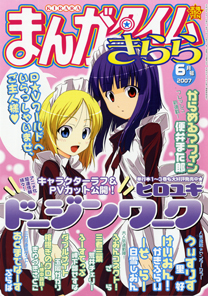 W
WManga Time Kirara is a Japanese seinen manga magazine published by Houbunsha which mainly serializes four-panel manga. The magazine is sold on the ninth of each month and was first published as a special edition of Manga Time, another Houbunsha magazine, on May 17, 2002. Characters from the magazine have appeared in a crossover role-playing game called Kirara Fantasia.
 W
WManga Time Kirara Carat is a Japanese seinen manga magazine published by Houbunsha and mainly consisting of four-panel comic strips. The first issue was released on 18 January 2003.
 W
WManga Time Kirara Forward is a Japanese seinen manga magazine published by Houbunsha. The magazine is sold on the twenty-fourth of each month. Forward was the fourth magazine in the Manga Time Kirara line to be published, the first three being Manga Time Kirara, Manga Time Kirara Carat, and Manga Time Kirara Max. Forward was first published on March 23, 2006.
 W
WMonthly Action is a Japanese seinen manga magazine published by Futabasha.
 W
WMonthly Afternoon is a Japanese monthly seinen manga anthology published by Kodansha under the Afternoon line of magazines. The first issue was released with a cover date of January 25, 1986. Afternoon has spawned many successful seinen manga series such as Oh My Goddess!, Genshiken, Blade of the Immortal and Big Windup!. It is part of Kodansha's "1day" series, which also includes the magazines Morning and Evening. A spin-off magazine, named good! Afternoon, started publishing on November 7, 2008.
 W
WMonthly Big Comic Spirits is a monthly Japanese seinen manga magazine published by Shogakukan and aimed at males 20–25 years old. It originally launched on August 27, 2009. It is a companion magazine to the weekly Big Comic Spirits.
 W
WMonthly Comic Alive is a Japanese seinen manga magazine published by Media Factory. The first issue was released on June 27, 2006.
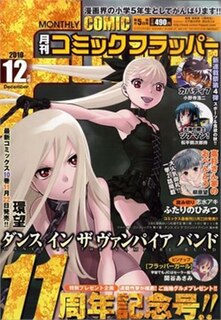 W
WMonthly Comic Flapper is a monthly Japanese seinen manga magazine, published on the 5th each month by Media Factory since November 5, 1999 as a successor to Comic Alpha. The magazine celebrated its 100th issue on February 5, 2008.
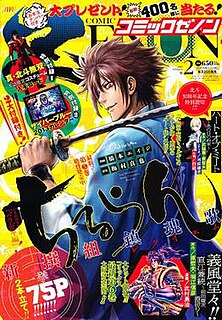 W
WMonthly Comic Zenon is a Japanese manga anthology. It is marketed to seinen public, edited and published monthly by Coamix. From 2010 to 2020, it was formerly published by North Stars Pictures and Tokuma Shoten. It was produced as a replacement for Weekly Comic Bunch, Coamix's previous manga anthology. The collected editions of their titles are published under the Zenon Comics imprint.
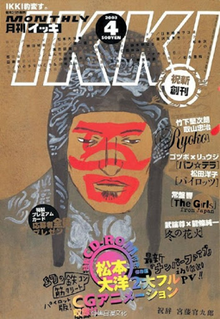 W
WMonthly Ikki was a monthly seinen manga magazine published by Shogakukan. It tended to specialize in underground or alternative manga, but it had its share of major hits as well. The magazine started in 2000 as a spin-off of Shogakukan's Weekly Big Comic Spirits, titled Spirits Zōkan Ikki, published on a bimonthly basis, and became a standalone monthly magazine in 2003. In 2009, Viz Media launched an online English version of Monthly Ikki, named SigIkki, which serialized selected titles from the magazine. Ikki ceased publication after an almost fourteen-year-run in 2014, and was replaced by Hibana, which ran from 2015 to 2017, before ceasing its publication as well.
 W
WMonthly Magazine Z was a Japanese seinen mixed-media magazine published by Kodansha, aimed at adult males, but particularly at hardcore anime and manga fans, featuring articles as well as manga tied into popular franchises. Original manga were also featured in the magazine.
 W
WMonthly Sunday Gene-X , often abbreviated as Sunday GX (サンデーGX), is a seinen manga magazine published by Shogakukan. Like many other manga magazines, it's an "anthology magazine" with each issue featuring new chapters of several manga series. The series are also published in book form as Sunday GX Comics.
 W
WMorning is a weekly Japanese seinen manga magazine published by Kodansha. It debuted in 1982 as Comic Morning . The digital edition of the magazine is titled Weekly D Morning .
 W
WOto Nyan is a Japanese manga magazine, which was published quarterly by Million Publishing from October 25, 2010 to May 25, 2013, for 11 issues; for its final issue, it was rebranded Oto Nyan Omega (おと☆娘Ω). The manga in the magazine focus on male characters who cross-dress; the magazine also includes articles, interviews, and media reviews.
 W
WSuper Jump , was a biweekly manga anthology published by Shueisha under the Jump line of magazines. Released in Japan on December 20, 1986, the magazine provided serialized chapters of various seinen manga series. The manga series were published under the Jump Comics Deluxe imprint.
 W
WUltra Jump is a Japanese monthly seinen manga magazine published by Shueisha under the Jump line of magazines. Originally, the magazine was a special issue of Weekly Young Jump which was first issued in 1995. On October 19, 1999, the special issue became the new monthly publication Ultra Jump. The manga titles serialized in the magazine are published in tankōbon volumes under the Young Jump Comics Ultra label.
 W
WWaai! is a Japanese manga magazine which was published by Ichijinsha from April 24, 2010 to February 25, 2014, for 16 issues. The manga in Waai! focus on male characters who engage in cross-dressing, willingly or due to circumstance; the magazine also includes articles, interviews, and reviews. Its sister magazine Waai! Mahalo (わぁい!Mahalo) was published for 6 issues from April 25, 2012 to December 25, 2013, and only contains manga.
 W
WWeekly Comic Bunch is a defunct Japanese manga anthology marketed to a seinen audience that was edited by Coamix and published weekly by Shinchosha from 2001 throughout 2010. The collected editions of their titles were published under the Bunch Comics imprint.
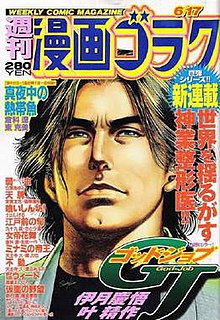 W
WWeekly Manga Goraku is a Japanese weekly manga magazine published since 1968 by Nihon Bungeisha which targets a demographic of adult men. The magazine is published every Friday.
 W
WWeekly Manga Times is a Japanese weekly seinen manga magazine published by Houbunsha since November 1956. The publisher claims it was Japan’s first weekly manga magazine, and the magazine is published every Friday. While its name resembles that of its sister magazine Manga Time, it does not publish yonkoma manga. The magazine is also known by the nickname Shūman (週漫), and uses the slogan "Live Happily Once a Week!" . Manga Times has a weekly circulation of about 380,000.
 W
WWeekly Young Jump , launched in 1979, is a weekly Japanese seinen manga magazine that publishes various manga in each issue. It is published by Shueisha under the Jump line of magazines. The chapters of series that run in Weekly Young Jump are collected and published in tankōbon volumes under the "Young Jump Comics" imprint every four months. Many of the featured series are known to contain heavy violence and a fair amount of sexual content. The magazine is headquartered in Tokyo.
 W
WWeekly Young Magazine is a Japanese weekly anthology magazine published in Tokyo each Monday by Kodansha. The magazine was started on June 23, 1980 and is targeted at the adult male (seinen) demographic. It was published bimonthly, on the second and fourth Mondays of every month, until switching to a weekly publication in 1989. The chapters of the series that run in Weekly Young Magazine are collected and published in tankōbon volumes under the "YoungKC" imprint every four months.
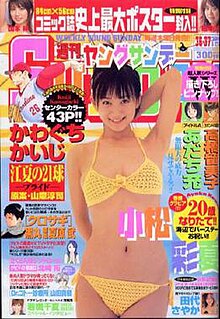 W
WWeekly Young Sunday was a weekly manga magazine published by Shogakukan in Japan since the first issue on April 10, 1987. It replaced Shōnen Big Comic in Shogakukan's lineup of shōnen titles, and many of the titles in Shōnen Big Comic were continued in Young Sunday. The magazines was sometimes called Yansan (ヤンサン) for short.
 W
WYoung Ace is a monthly seinen manga magazine in Japan published by Kadokawa Shoten, started in 2009.
 W
WYoung Animal is a semimonthly Japanese seinen manga magazine that features photos of gravure idols. It has been published by Hakusensha on the second and fourth Friday of each month since 1992.
 W
WYoung Animal Arashi was a monthly Japanese shōnen manga magazine published by Hakusensha. A sister magazine to Young Animal, it was released on the first Friday of every month in B5 format from 2000 to 2018.
 W
WYoung Comic is a long-running Japanese seinen manga magazine started in 1967 as a magazine for teenage boys competing with titles like Manga Action and Big Comic. Today it targets a young adult male audience with contents tilting heavily toward sex, nudity, and gratuitous fan service. It is published monthly by Shōnen Gahōsha as a sister publication to Young King. Its circulation in 2008 was reported at 112,000 copies.
 W
WYoung King is a biweekly seinen manga magazine published in Japan by Shōnen Gahōsha, aimed primarily at adult male audiences. It is the sister publication of Monthly Young King and Young King OURs and was founded in 1987 as the sister publication of the now-discontinued Shōnen King. As of 2008, the circulation was about 230,000.
 W
WYoung King OURs is a monthly seinen manga magazine published in Japan by Shōnen Gahōsha, aimed primarily at male audiences, mostly older teens and young adults. It is the sister publication of Young King. As of 2008, the circulation of Young King OURs was 68,000 copies.